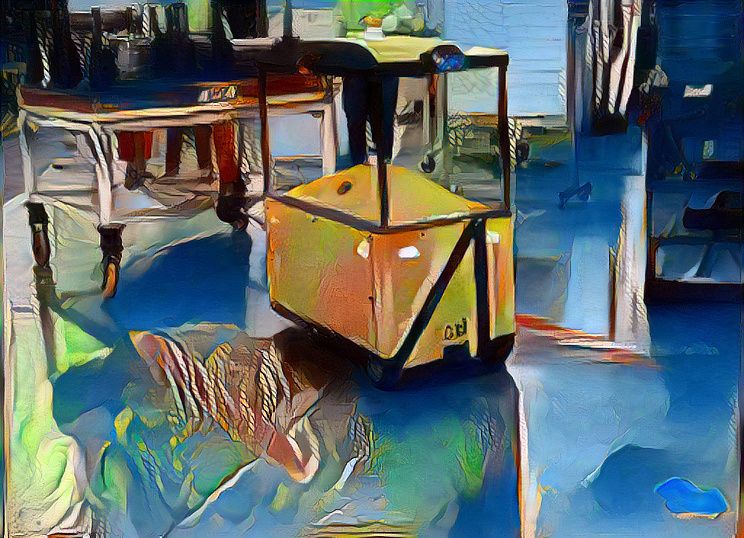
A Robotics Startup’s Manufacturing Design Win Journey
There are 370,000 manufacturing companies in the United States today. That is more manufacturing companies in the US alone than Apple employees globally.
I love startups, robots, and the drama of chasing significant design wins. So it catches my attention when a 5-year-old robotics company from Bangalore wins business with a substantial Midwestern U.S. manufacturer. This young venture aims to solve a vital productivity problem for manufacturing and warehouse facilities in the United States and other developed economies.
Ati’s Beginnings
Ati, which means “superlative” in Sanskrit, started in Bangalore in 2017. Like many startups with strong technical teams, they looked at audacious projects such as creating a fully autonomous two-wheeled cargo vehicle - a self-driving electric motorcycle. Instead, the company settled on solving a daunting and important problem in India: carrying goods on rough paths and across spaces dotted with holes, mud, and stones.
They created a robust three-wheel vehicle, essentially an autonomous electric ATV. Successful startups must be nimble. When this video of Ati’s prototype went viral in 2018, inquiries poured in from an unexpected market segment: factories.
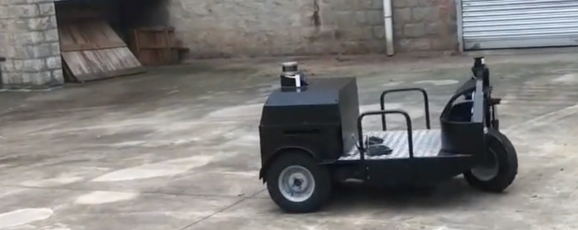
It turns out that factories’ rugged floors, driveways, and ramps have a lot in common with rocks and potholes. During their prototype product demonstrations at dozens of factories in India Ati’s founders saw that the real need was not carrying loads but pulling them. Specifically, pulling the carts or trolleys loaded with goods and materials from one production stage to the next. Ati pivoted to target that less sexy but enormously practical problem.
Successful startups are also highly adaptable. Buoyed by strong interest, Ati planned to retrofit their initial vehicle and quickly deliver it to customers. Unfortunately, the pandemic put a stop to that go-to-market strategy. Saurabh Chandra, a successful IT entrepreneur, is Ati’s co-founder and CEO. He drives the company with a relentlessly positive attitude: every problem has a solution. Ati’s home-grown engineering team used the covid-forced lull to re-design multiple sophisticated hardware and software features for their factory clients.
They created a purpose-built three-wheeled robot with local lead customers and manufacturing partners that pulls carts around factories. Their “tug-bot” hauls loads through harsh conditions; they named it, “Sherpa.”
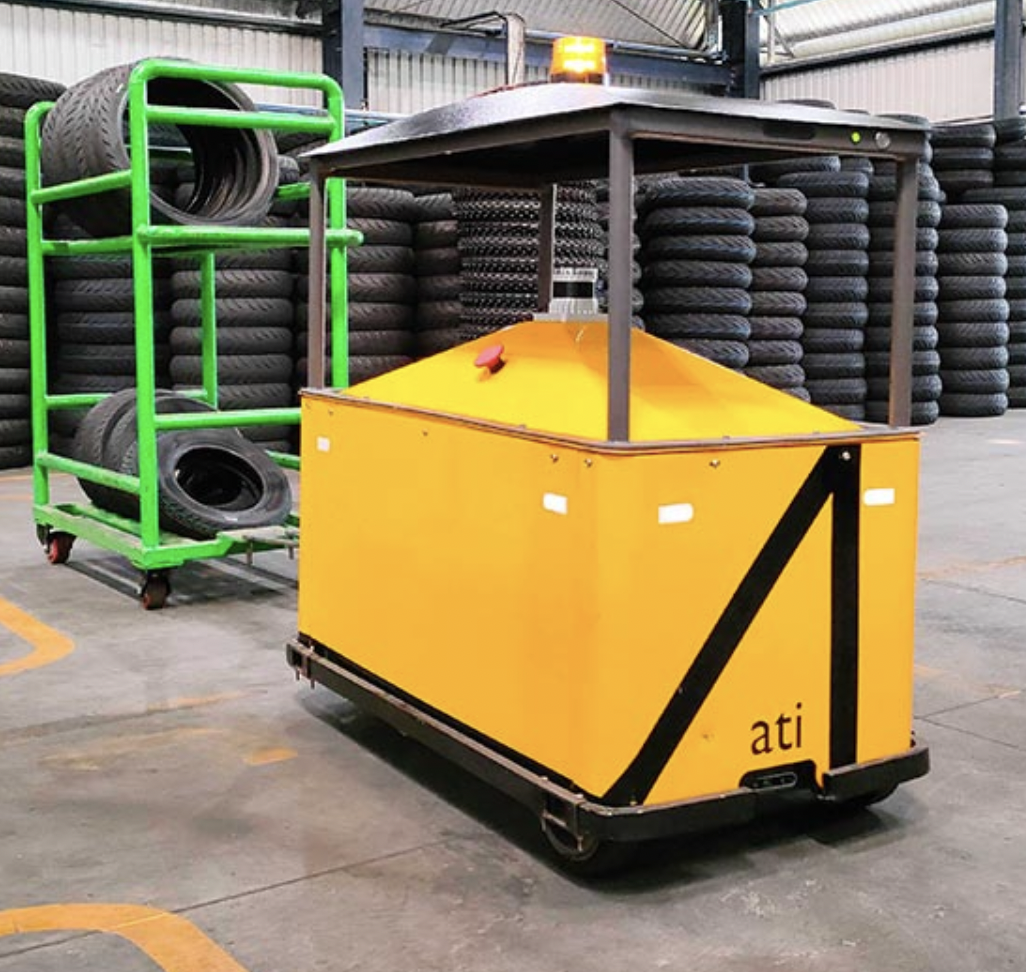
The Market Is Huge: So Are The Demands
A “tug-bot” hauling a cart seems a lot less exciting than a robo-cycle flying down dirt tracks like Steve McQueen. But the business opportunities and the technical challenges are gigantic.
According to the Bureau of Labor Statistics, there are 370,000 manufacturing companies in the United States today. That is more manufacturing companies in the US alone than Apple employees globally. The number stunned me at first. When I imagine "manufacturing," I see consumer electronics gadgets and factory-cities in Asia. But my office furniture, kitchen cabinets, and water heater are all built in the USA.
Virtually none of these hundreds of thousands of domestic manufacturers can fork over the $300 million that Amazon spends on new robot-centric fulfillment centers. The direct cost of retrofitting floors and racks isn’t the only issue. Facilities often run 24 hours a day, six days a week. Pausing production to support basic tug-bots by adding and maintaining floor markers and changing layouts carries a big opportunity cost.
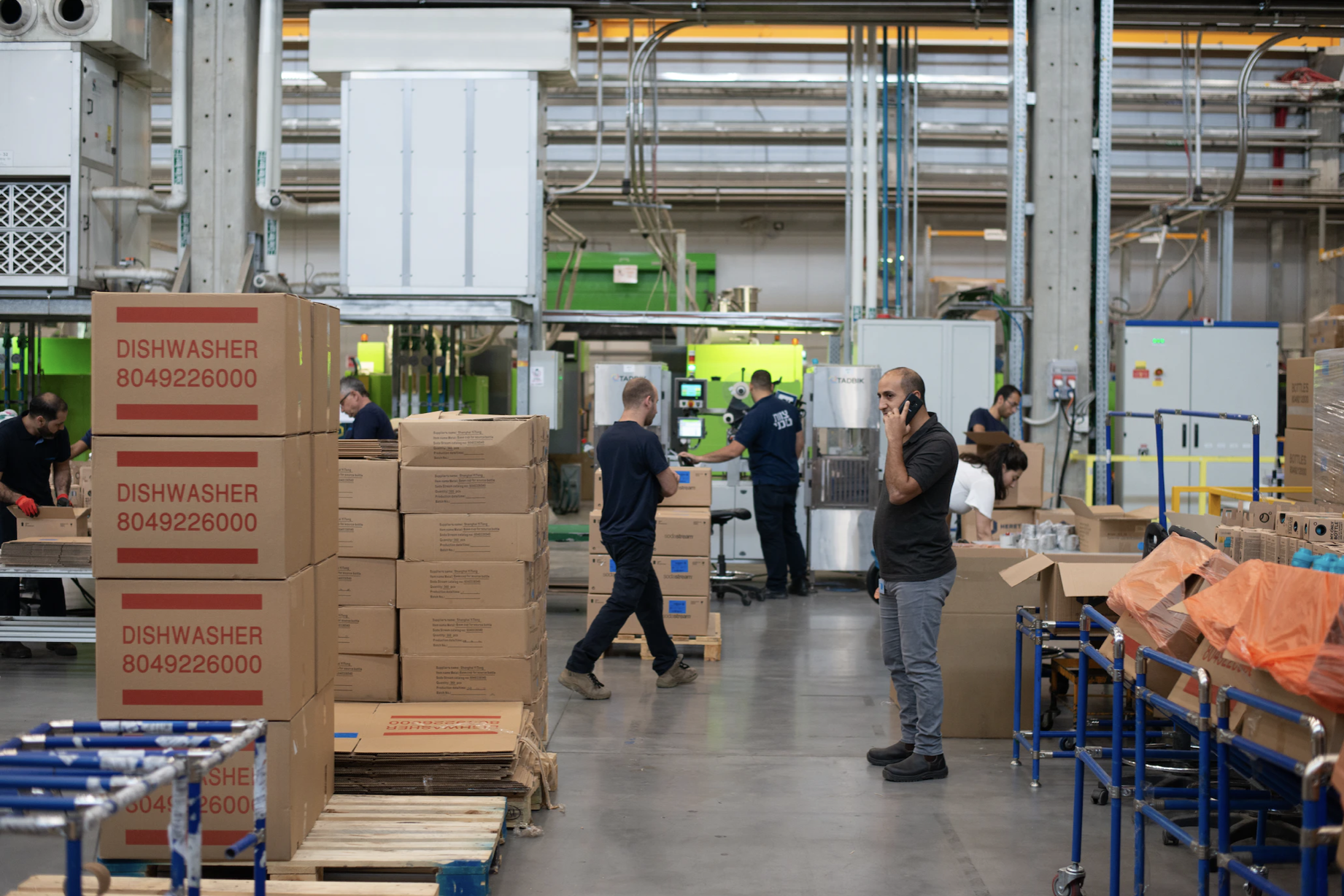
Labor supply is problematic. One of the most common factory and warehouse tasks is simply moving things around. Around 7 million U.S. factory and warehouse workers just move stuff from one place to another. That’s staggering because it does not change or add value to a product. Employers spend billions of dollars annually on these jobs that most people don’t want: positions are tough to fill. One factory manager put it this way. "A third of my floor workers have to wear ankle bracelets, and another third are migrants who don’t stay long.”
2.1 million manufacturing jobs in the U.S. may go unfilled by 2030. That’s as many people as the population of major cities like Brussels and Phnom Penh.
We have been taught to fear that robots will replace humans. Many “future of work” forecasters take dire projections as gospel, like one in a famous 2013 Oxford paper, that 47% of all U.S. jobs would be automated within a decade or two (p.38). However, in reality, there aren't enough humans to do the jobs that need to be done.
There aren't enough humans to do the jobs that need to be done
Even with a tremendous labor shortage, a 2019 Modern Materials Handling Institute survey (here, p. 45) showed only 15% of respondents using tug-bots. The technology needed to roll into a legacy facility’s workflow seamlessly is deceptively sophisticated: the market needs better solutions.
Way Harder Than It Looks
You want a robo-hauler to mimic an industrial-strength Roomba®. Just unpack the bot from its crate, tell it where to take a load, and press Start. You want zero facility changes even if there are ramps, multiple buildings, and potholes in the paths between them. The bot must teach itself the entire layout as it goes, stopping or changing course for anything that has moved since its last trip such as people, equipment, and goods.
Innovative engineers are captivated by technical challenges. A tug-bot and its load are about the size and weight of a Mini Cooper. Hardware and software designers must coax that beast to drive itself through a random factory without crushing people, machines, or other moving robots.
The bot has to know where it is and decide how to get where it’s going. It has to perceive its location and surroundings, update the facility map, and quickly move that Mini Cooper-sized load. The demands on sensing, computing, and motor control are formidable.
Sherpa has to work 24 hours daily with minimal maintenance; mistakes can cause mayhem. Crashing into a towering rack of parts, a group of humans, or even other robots as they scoot around, is catastrophic. Forklifts, which are similar in size and weight to a Sherpa and a loaded cart, cause 1% of factory accidents but are responsible for a whopping 11% of all factory injuries.
These problems are so hard that companies with mountains of cash, like Amazon and Shopify, build brand-new warehouses around the robots’ limitations. The human workers, not the robots, adapt to the new surroundings.
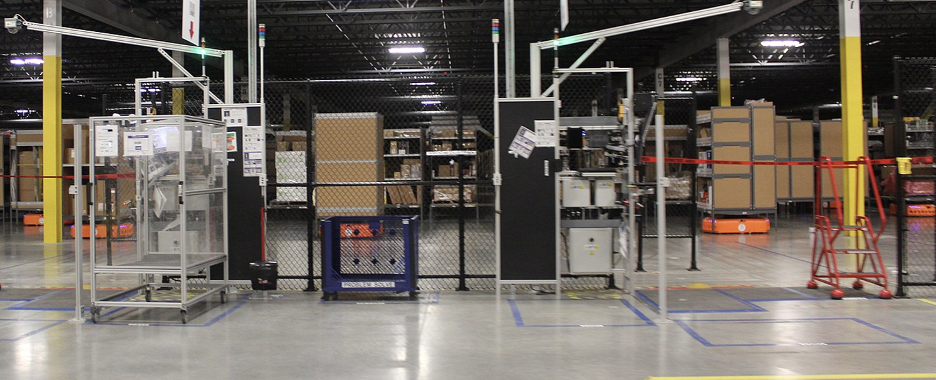
Competitors
Most robotics companies grow up in countries with high labor costs, like the United States, South Korea, and Germany. Ati’s C.E.O., Saurabh Chandra, says, “Competitors’ solutions are typically developed in nice places, for nice facilities.”
Amazon bought Reading, MA, robotics company Kiva Systems for $775 million in 2012. They are the world’s largest robot builders, and every new Amazon robot rolls off to nice new fulfillment warehouses. Amazon recently signed an acquisition agreement with iRobot, the Bedford, MA, maker of the Roomba, for $1.7 billion. Roomba may stay focused on cleaning your floor, but mapping your house is similar so mapping a factory that iRobot’s technology may also show up in fulfillment centers.
Not to be outdone, Shopify bought a warehouse logistics robot company of their own, Waltham, MA’s 6 River Systems, for $450 million in 2019.
Thus Ati enters the octagon with corporate Goliaths whose robotics investments run in the billions. Yet, this boot-strapped operation of 60 people in Bangalore has loaded its sling with clever engineering and entrepreneurial grit.
Ati’s Tech
Sherpa is developed entirely in Bangalore. Ati leverages the deep local engineering talent pool, manufacturing partners, and local lead customers like Bosch and Hyundai.
Tech startups selling to commercial customers face a perilous path. The first product has to be radically better than what entrenched competitors offer. But they have to repeatably build and deliver that product at a profit.
A classic tech startup's pitfall is developing technology for its own sake instead of solving a customer’s problem. Engineers love to design the fastest, the most powerful, the most high-tech, the most…pick your superlative…widget ever. Unfortunately, the result is often something that customers don't want to buy. I call them solutions, rampantly searching for problems to solve, and they typically lead to bankruptcy.
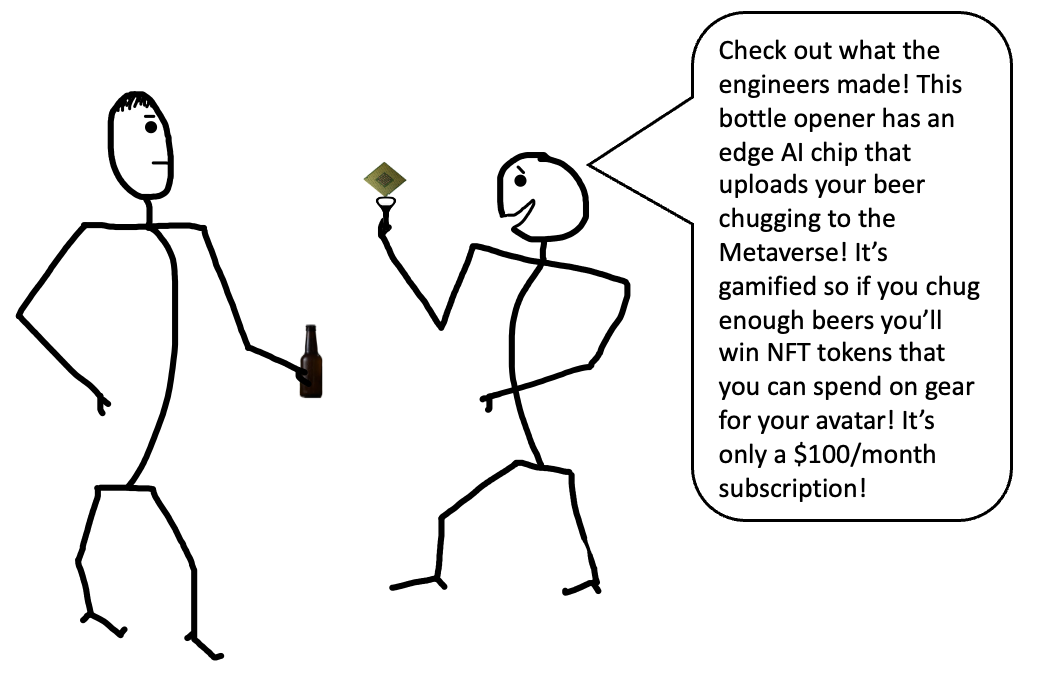

Ati uses a simple saying to fix their minds on customer needs: “Zero Infrastructure Requirement.” In other words, “don’t make the customer change one single thing in their factory to use our products.”
Zero Infrastructure Requirement impacts a slew of robot design decisions. Here’s a fundamental problem: what's the best way to recharge the bot's battery? Customers don’t want to change their work floor or suffer charging downtime. The solution: Sherpa uses 8-hour batteries that quickly swap in and out. Wirelessly charging a Sherpa for an 8-hour shift would cost two hours of unproductive down-time. In addition, customers can’t afford to park equipment for charging like consumers park electric cars.
Legacy facilities have all sorts of automation-unfriendly features that humans don’t mind. For example, one of Ati's customers needs a bot to haul heavy carts out of a building, 50 meters down a ramp, across a road, up another ramp, and into another building. Before working with Ati, they had continuously evaluated robots for over three years without success.
Ati’s original design goal of autonomy on rugged roads attacks the same problems. It starts with a vision. Most tug-bots look straight ahead and see the world in two dimensions: left and right, near and far (depth). Because they can’t see up and down, tables look like doors, and ramps look like walls.


2D scanners are sometimes called “ankle detectors.”

This summer, an attendee at an advanced manufacturing exposition told me a story about how a bot with 2D vision started a fire. The robot wandered through a cafeteria as a demonstration. Finding its pre-programmed path blocked, it scanned for alternatives. The bot’s 2D scanner, mounted 10 cm off the ground, did not see the horizontal bar on a table like this.
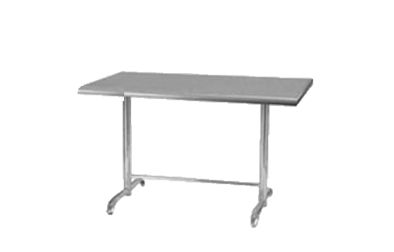
To the bot that table, which held an open-flame food warmer, looked like an open aisle! So the robot proudly scooted on its newly discovered under-table path and crashed the flaming food-warmer to the floor.
3D vision is essential for a tug-bot to help out in factories built for humans. 3D “Lidar,” for “Light Detection and Ranging,” is the sensor for the job. Lidar is similar to Radar, “Radio Detection and Ranging,” but uses lasers instead of radio signals. If you’ve seen one of Waymo’s self-driving cars, you’ve seen a 3D Lidar sensor.

Lidar fires lasers in all directions and then captures and records their reflections. The longer it takes a laser beam to reflect back from an object, like a person, the farther away that object must be. For example, suppose you point a laser at a stack of boxes ½ meter deep piled next to a wall. The laser beam reflected from the boxes has to travel 1 meter less than the beam reflected from the wall; it will arrive just over 3-billionths of a second sooner (light travels about 300,000,000 meters per second).
3-billionths of a second, or three nanoseconds, is three times faster than one step in a nuclear chain reaction (like in atom bombs). It's 300,000 times faster than a camera flash and a hundred million times faster than the blink of a human’s eye. Lidars send and receive those ephemeral signals thousands of times a second.
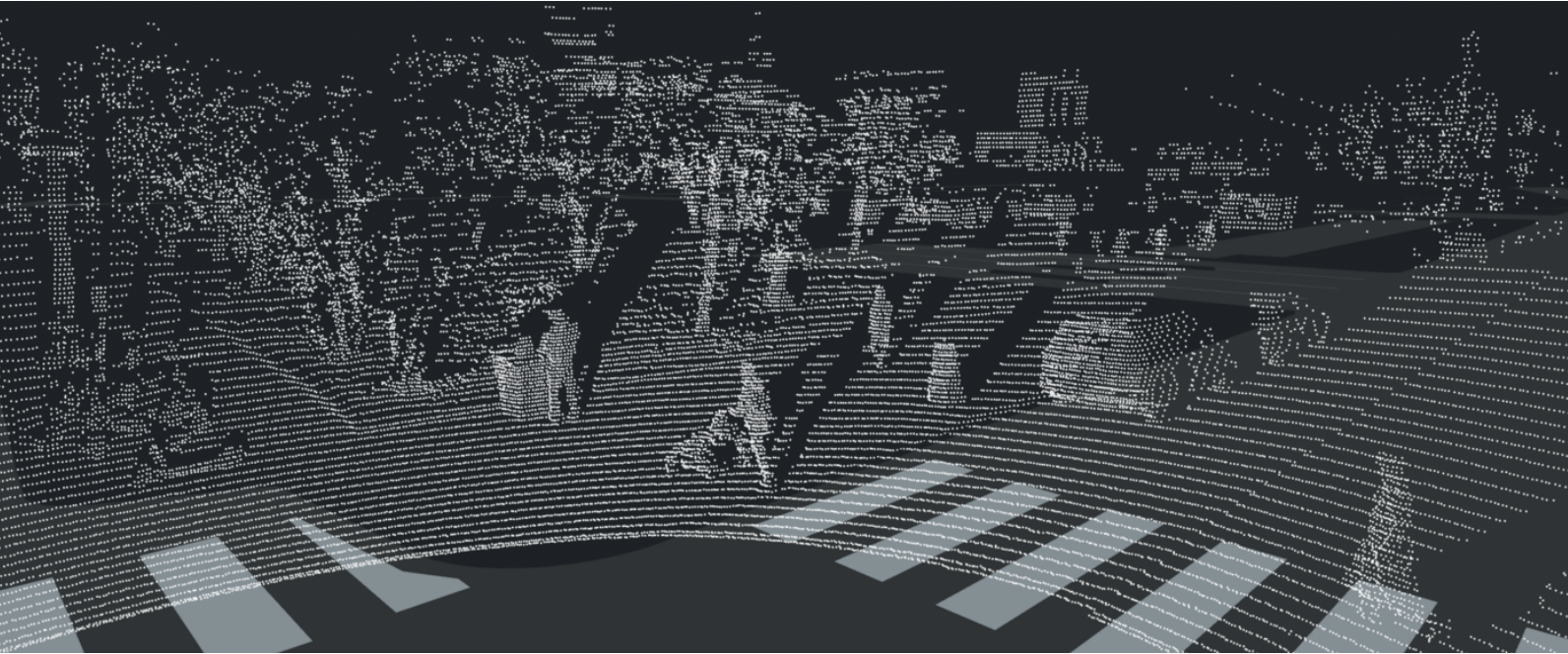
As you’d expect, 3D Lidar is more expensive than 2D Lidar. A 2D Lidar scanner needs only one laser: 3D systems use between 8 and 128. Making an understandable 3D image out of all those reflections instead of simply detecting ankles takes powerful and expensive algorithms and computing.
In addition to the 3D Lidar Ati has added multiple cameras, an accelerometer, a gyroscope, and “wheel encoders” (they measure wheel rotation) to help Sherpa see as it tows its metric-ton loads.
Seeing well is only the start: a bot has to know where to go and how to get there. Robots made in nice places for nice facilities count on location marks clearly laid out in a regular grid on clean, flat floors.
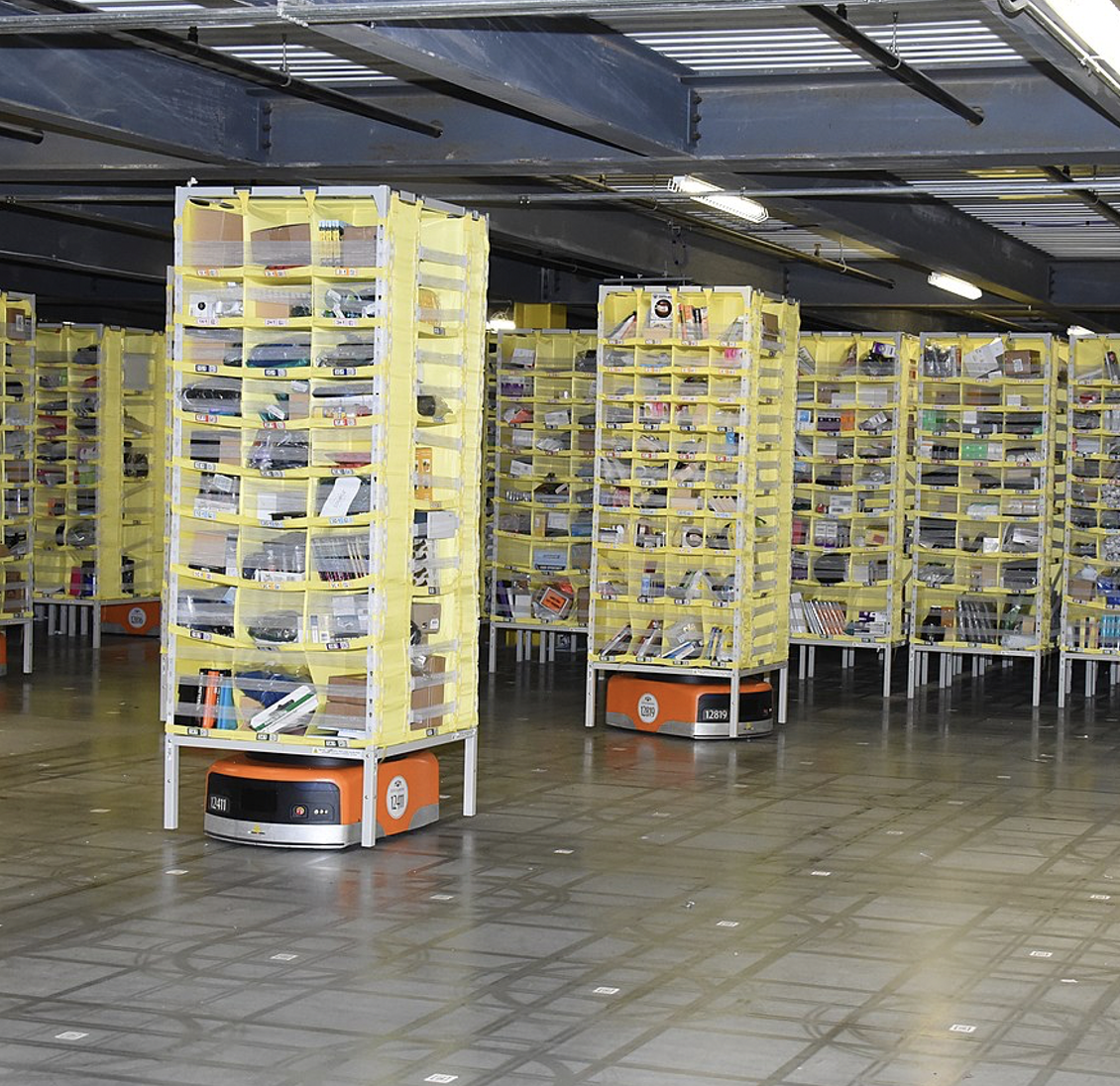
Robots marching in nice facilities have exactly one size and shape of load to bear, but Sherpa hauls whatever the Customer has on hand. You can summon a Sherpa with a button, hitch up a load of one, two, or even three carts, give it a destination, and off it goes. Sherpa will back its load up to un-modified conveyors with an accuracy of 2 cm. That’s even hard for a human driver.
Learning and updating a floor plan while moving around the facility is called Simultaneous Location and Mapping, or SLAM. Clever engineers are keen to work on that formidable challenge. The result is a benefit that customers gladly pay for: a bot that teaches itself how to navigate any layout. Sherpa needs a little human help to learn weird situations like backing up or doing U-turns with the Customer's carts, but otherwise, the Sherpa is like a self-teaching, self-driving car that travels your town’s roads and alleys.
Ati’s engineers designed critical electronics and software from the ground-up. They wrote their own code to read Sherpa’s many sensors, create and update maps, and constantly know the bot’s location. The whole autonomy stack was done ground up like in self-driving cars, and unlike more industrial robots. Most industrial robots use substantial amounts of open-source software like the popular Robotics Operating System or ROS. Ati’s engineers were allowed to break away from standard designs and think differently, but different doesn’t mean better. Customers are the real judges.
Gunning for their first U.S. design win, Ati recently took Sherpa to a major automotive component manufacturer in the Midwestern U.S. This Customer would run Ati’s technology and business concept through the gauntlet, and Ati’s investors would critique the results.
The demo
At 6:30 on a Sunday morning, Ati’s U.S. V.P. huddled with his two field engineers in a side aisle of a 400,000-square-foot factory floor. The Customer's automation engineers and production managers joined and greeted them. The teams had met for beers the day before after a test-course walk-through. Though it was Fathers’ Day, Sundays are the only time the massive production facility has scheduled "downtime," and new robots can run on the course.
Everyone, men in their thirties to fifties, wore blue jeans, casual shirts, steel-capped work boots, jeans, protective sleeves, safety glasses, and bright chartreuse vests. A giant American flag hung from the bright white ceiling and against the bright white wall behind it.
The Customer has evaluated robots for many years. Five decades ago, when Elton John’s “Rocket Man” topped the charts, a robotics evaluation staff would also have been a science fiction story. Today amid heartland farms, robot testing is a long-standing role with expert staff. They test for the real world: their site, their aisles, their carts, their loads, even their existing tug-bots droning about, crossing, and passing the test course. So Ati not only had to show how Sherpa works but crucially how Sherpa works for them.
Sherpa had to run the Customer's obstacle course while surpassing the Customer's unyielding safety, time, adaptability, and ease of use targets. After a quick test plan discussion, the Customer's team stepped back, and an Ati engineer held up a PS4 wireless gaming controller to the Sherpa. Then, with a couple of taps, the bot lit up. It projected wide red laser beams onto the polished concrete floor from each side: hazard indicators matching the load width. Next, Sherpa shot blue laser arrows down on the floor in front showing direction and minimum stopping distance. Finally, after a few more clicks on the PS4 controller and a series of eager beeps from Sherpa, the bot set off to learn the course.
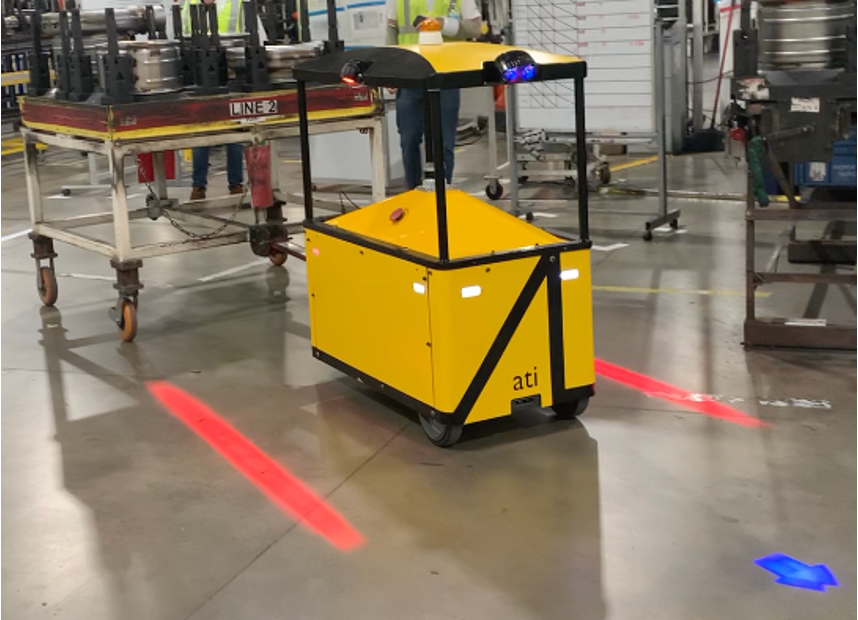
Ati's U.S. V.P., who immigrated to the U.S. from India 22 years ago, took notes throughout the day. Technology, his reputation with the Customer, the Customer's production, engineers' morale, and investors' perceptions would all converge on Sherpa's performance. His notes tell the story.
12:15 pm: “All the hard stuff done… the U Turn, the back-up maneuver, hauling three carts with 2700 pounds of load.”
(Takt time is the rate at which you must complete products to meet the production schedule; it is a vital return-on-investment, R.O.I., metric.)
1:00 pm: “Takt time over budget. Tried 3 carts - success. Now measure Takt time with 3 carts. Limit is 12 minutes round trip.”
2:12 pm: “Uh oh. There was an ‘incident.’ Sherpa bumped into one of the legacy bots roaming the floor. Customer must have an incident review meeting tomorrow.”
3:15 pm: “High tension over Takt time today! Critical metric!”
4:30 pm: “I am highly impressed by North American manufacturing. People are dedicated, extremely hard-working, and very good at what they do. With increasing autonomy comes increasing responsibility and risk. If a Sherpa breaks down, production stops.”
5:10 pm: “Followed around all day by customer management, all there on Fathers’ Day. Takt time successful! Team watches their faces for reactions. Trying to keep a serious face when Customer says he's likely to go ahead.”
8:30 pm: “Customer has commented that Ati’s software does in one day what competitors do in three weeks. Investments in 3D Lidar and autonomy software making a big difference, CEO will be happy.”
I’ll interject here. One day versus three weeks is radically better. Sunday, however, was only a partial success. The incident review meeting was pending on Monday afternoon. A safety failure would sink Ati’s chances. Ati's V.P.'s notes continue.
Monday, 7:15 am: “What a rollercoaster!!!! We were at the site 15 for hours. The Customer looks at every detail, like the need for a human to push material off the cart at delivery. Every little thing is important for R.O.I."
Monday, 4:30 pm: “Incident meeting is over. Conclusion is that the bump wasn’t Sherpa’s responsibility. We’re clear.”
Four weeks later, after intense trial results analysis and commercial negotiation, Ati received its first U.S. purchase order.
Pulling An Upward Spiral for U.S. Manufacturing
Labor costs are higher in the U.S. than in most countries. According to C.B. Insights, manufacturing labor costs worldwide vary hugely from $60 per hour in Switzerland to $39 in the U.S. and around $5 in Mexico and China. Even with higher wages, the manufacturing labor supply is desperately thin. Automation is dearly needed in legacy facilities.
Ati's engineers converge sophisticated software, sensors, battery management, mechanics, and motor controls. However, the company would be merely a science project without an intense focus on solving customers’ problems. Investors and entrepreneurs salivate over massive market opportunities like the hundreds of thousands of legacy factories and warehouses in the U.S. If Ati’s clever engineers stay focused on these real problems, they will help transform manufacturing and logistics in many countries. That will make their investors quite happy.

ExO Insight Newsletter
Join the newsletter to receive the latest updates in your inbox.









